Clinical Named Entity Recognition (NER)
Use entity extraction to glean vital insights from unstructured medical data.
What is NER
Named Entity Recognition (NER) is a powerful tool in healthcare that uses advanced Natural Language Processing (NLP) models to identify and extract key information from unstructured data, such as patient names, medical terms, medications, treatments, and anatomical structures. By sorting and organizing this information, NER improves data retrieval, simplifies the process of finding relevant details, and enhances advanced AI technologies, making it an essential tool for healthcare institutions.

Named Entity Recognition (NER) is a powerful tool in healthcare that uses advanced Natural Language Processing (NLP) models to identify and extract key information from unstructured data, such as patient names, medical terms, medications, treatments, and anatomical structures. By sorting and organizing this information, NER improves data retrieval, simplifies the process of finding relevant details, and enhances advanced AI technologies, making it an essential tool for healthcare institutions.
Categories Detected by Medical NER API include:
- MEDICAL_CONDITION: Identifies diseases, injuries, symptoms, or any health complaints.
- MEDICATION: Names of drugs, treatments, or other therapeutic substances.
- ANATOMY: Terms related to body parts, organs, or anatomical structures.
- TEST_RESULT: Highlights outcomes from medical tests.
- PROCEDURE: Identifies medical interventions, tests, or operations.
- PERSON: Identifies individuals involved in the patient’s care or personal life.
- TIME: Identifies time-related references, such as durations, frequencies, or specific dates.
Examples
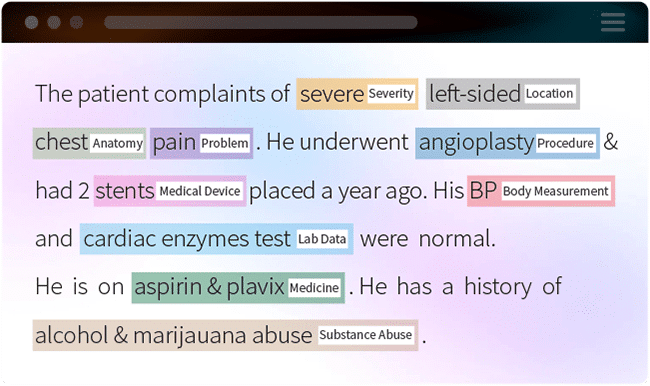
1. Clinical Entity Recognition
Health records contain a huge amount of medical data, mostly unorganized. Annotating medical entities helps organize this data neatly.
2. Attribution
2.1 Medicine Attributes
Most medical records include medication details and features, which are essential for clinical practice. We can identify and label these medication attributes by following set rules.
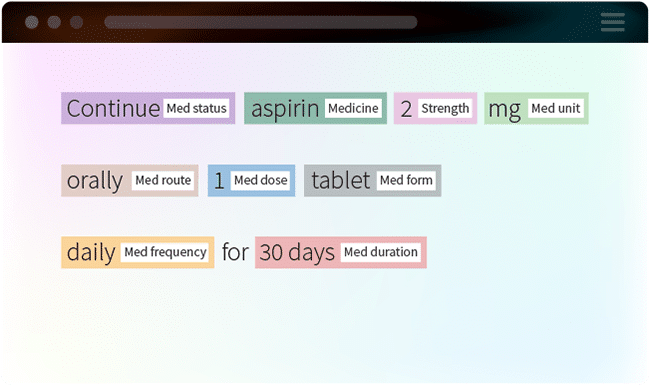
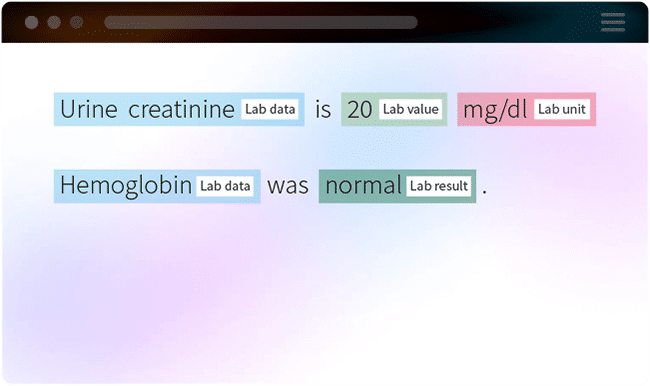
2.2 Lab Data Attributes
Medical records’ lab data comes with unique details. We identify and mark these lab data specifics while adhering to strict guidelines.
2.3 Body Measurement Attributes
Medical records document body measurements, like vital signs, with specific attributes. We highlight and label these body measurement details accurately.

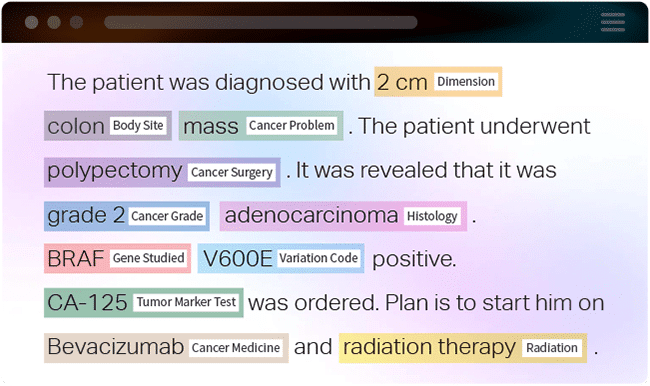
3. Oncology Specific NER
Beyond basic medical NER annotations, we cover specialized fields like oncology and radiology. In oncology, we annotate specific entities such as types and stages of cancer, tumor characteristics, treatments, Cancer Medicine, Cancer Surgery, Radiation, Gene Studied, Variation Code, and Body Site.
4. Adverse Effect NER & Relationship
We go beyond identifying and annotating clinical details and their connections. Our process includes noting the side effects of the drug or procedure. Our approach includes tagging these adverse effects and their causes and mapping out their relationships.
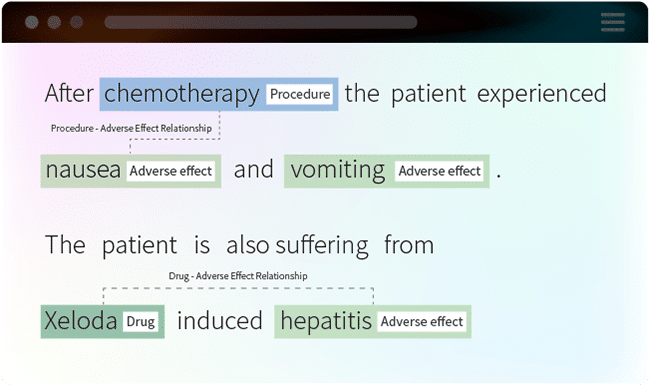
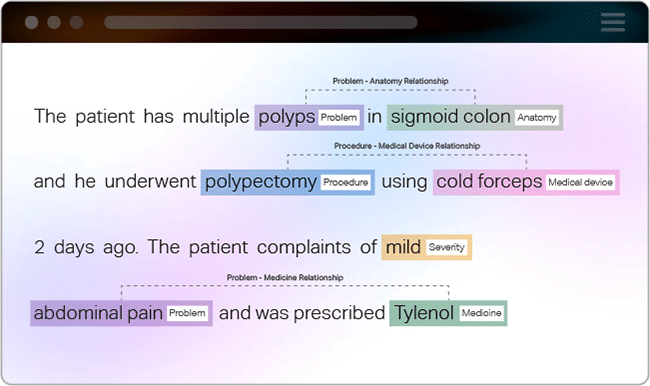
5. Relation Extraction
Relation Extraction helps to map out how different clinical entities such as symptoms, diseases, medications, and treatments are interconnected. This process transforms unstructured medical information into structured data, enabling accurate and insightful analysis for applications like diagnostics, treatment planning, and patient care.
6. Assertion Status
Our work extends to classifying the status, negation, and subjects related to clinical entities. We provide a deeper understanding of these clinical entities.

